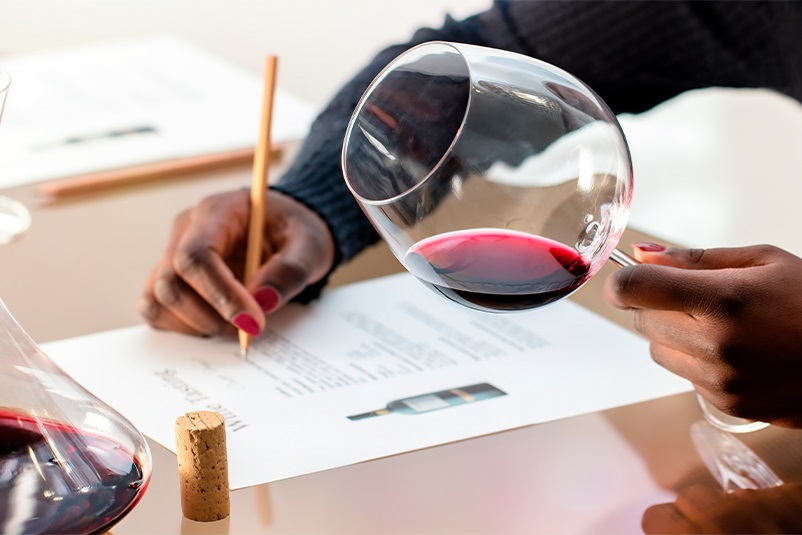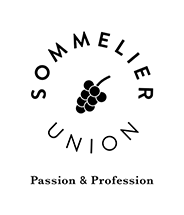International Association of Sommeliers and Wine Experts
The main goal of the Association is to coordinate actions and consolidate efforts aimed at establishing and improving of a culture of alcohol consumption, the development of viticulture and winemaking.

Sommelier associations
Sommelier
is a French word that has no analogs in English and therefore needs clarification. According to the definition proposed by Georges Pertuiset, President of the Union of Sommeliers of France, a sommelier is “the person in charge of serving drinks in a restaurant, advising on the selection of wines and drinks, serving them or overseeing their serving to the client until the moment when he leaves the hall.”
Our mission is:
-
1
to spread knowledge in the field of wine culture;
-
2
to promote quality alcoholic beverages;
-
3
to organize , on a regular basis, the annual specialized exhibition of products of the members of alcohol market and to hold thematic conferences with the participation of international partners;
-
4
to establish the special institute that allows to assess the quality of alcoholic beverages and has the right to issue official expert opinions on the researched product condition;
-
5
to increase the social significance and prestige of the wine industry professions;


-
6
to unite people with common professional interests and proximity of views;
-
7
to spotlight the activities of the Association and its partners in the media, to create professional media to spread information in the field of wine culture;
-
8
to cooperate with foreign and international public organizations, alliances, unions and associations, as well as with leading foreign producers of alcoholic beverages for the experience exchange with them;
-
9
to assist in creating favorable conditions for professional activity, en- suring a high social, economic and legal status of the members of the Association

wine score
A wine score is the quickest, simplest way for a wine critic to communicate their opinion about the quality of a wine. Often found alongside tasting notes, wine scores help consumers and collectors decide which wines to buy and can be a powerful marketing tool.
Wine-Searcher Aggregate Score
Wine-Searcher collates scores from a wide range of critics, from influential single palates like Robert Parker and Jancis Robinson to publications like Wine Spectator, all adjusted for the 100-point scale.
To generate a wine's aggregate score, Wine-Searcher uses a Bayesian metho-dology to calculate a weighted average. This score is calculated for specific vintages of a wine, as well as across all vintages.
The 100-point scale is the most common method for scoring wines. However, several key critics use a 20-point scale and some even use a 5-point scale.
100-Point Scale
The 100-point wine-scoring scale was popularized by Wine Spectator magazine and by Robert Parker in his Wine Advocate newsletter. The effect of a high score from either publication is hard to understate and can make or break a wine brand (see these lists of Wine Spectator Top 100 Wines and Robert Parker 100-Point Wines).There are many who question the value of the 100-point scale, typically because almost all wines evaluated fall within a narrow band between 85 and 100 points. The system is based on the American high-school marking system, so the scale starts at 50 (rather than 0), which has led to further criticism. Despite this the 100-point scale is used by more and more critics – amateur and professional – with each year that passes.
-
Score
Explanation
-
95–100
Classic: a great wine
-
90–94
Outstanding: a wine of superior character and style
-
85–89
Very good: a wine with special qualities
-
80–84
Good: a solid, well-made wine
-
75–79
Mediocre: a drinkable wine that may have minor flaws
-
50–74
Not recommended
Users of the 100-point scale include: Robert Parker (Wine Advocate), Wine Spectator, Vinous, Decanter Magazine, James Suckling, Jamie Goode, Jeff Leve (The Wine Cellar Insider), Wine & Spirits Magazine
20-Point Scale
The 20-point scale for wine scoring first emerged in 1959. It was developed purely for academic wine evaluation, by Dr. Maynard Amerine of UC Davis' much-respected Viticulture & Enology department. On this original scale, points were attributed for color, aroma and flavor, as well as more technical qualities including the balance of sugars, acids, tannins and volatile acidity. Even today the 20-point scale retains a slightly technical, traditional feel. One of its key proponents is Jancis Robinson.
-
Score
Explanation
-
20
Truly exceptional
-
19
A humdinger
-
18
A cut above superior
-
17
Superior
-
16
Distinguished
-
15
Average
Users of the 20-point scale include: Jancis Robinson, Bettane & Desseauve, Gault & Millau, La Revue du Vin de France, Vinum Magazine.
5-Point Scale and other systems
5-point scales most often use stars (or other symbols) rather than points per se. For many years Decanter Magazine used 5-star scores, but replaced these in July 2012 with dual 20-point and 100-point scores. John Platter has used a 5-star system in his Guide to South African Wine since the first edition in 1980. Italian wine magazine Gambero Rosso uses its own unique wine glass symbols (bicchiere) to rate wine, from one to three. Other guides highlight top-quality wines with an asterisk (two for truly exceptional wines).
-
Score
Explanation
-
14
Deadly dull
-
13
Borderline faulty or unbalanced
-
12
Faulty or unbalanced
Sommelier associations in the world

-
Operational office
-
Fax:
-
Web:
https://www.asi.info/ -
E-Mail:

-
Operational office
- JSA Bld. 17–3 Kanda Higashi matsushitacho Chiyoda-ku — Tokyo — 101–0042 Japan
-
Fax:
-
Web:
https://www.worldwidesommelier.com/ -
E-Mail:

-
Operational office
-
Fax:
-
Web:
https://www.worldwidesommelier.com/ -
E-Mail:

-
Operational office
- 3960 Redwood Ave , 90066 Los Angeles
-
Fax:
-
Web:
https://www.nasommelier.com/ -
E-Mail:
info@nasommelier.com

-
Operational office
- Geschäftsstelle, Lindenstraße 14, D-50674 Köln
-
Fax:
-
Web:
https://www.worldwidesommelier.com/ -
E-Mail:
info@sommelier-union.de

-
Operational office
- Casino 2000 Rue Flammang L 5618 Mondorf-les-bains Grand Duché du Luxembourg
-
Fax:
-
Web:
https://www.worldwidesommelier.com/ -
E-Mail:
corona.thierry@neuf.fr